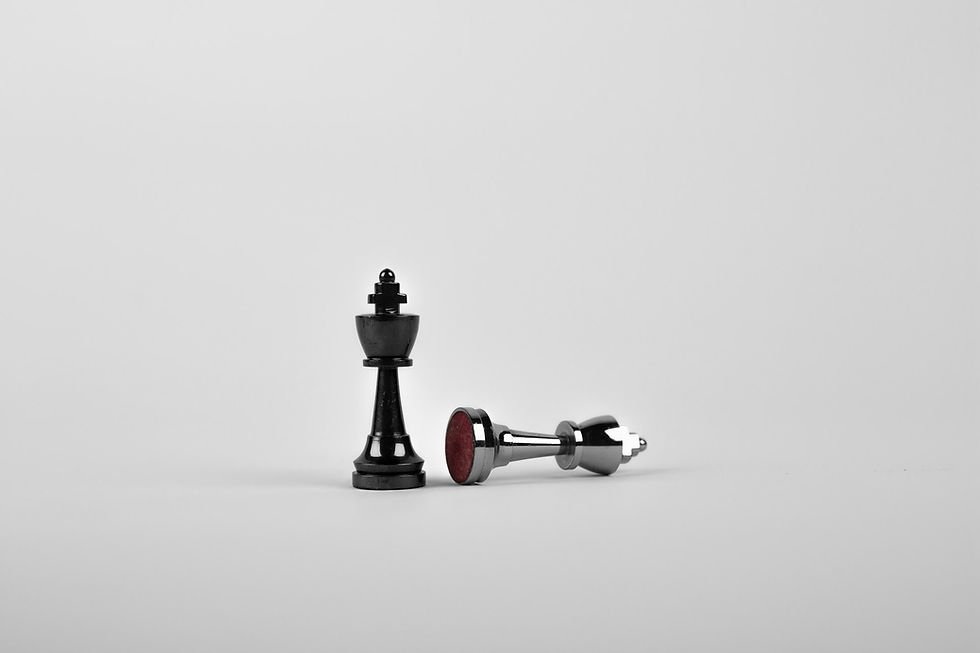The Rise of Branding
- Viknesh Kastor

- Jan 19, 2018
- 3 min read
Updated: Jan 22, 2018
Business today is about the war of Ideas, not features.

A Brief, Simplified History
Branding has its humble beginnings with brand marks from the ancient times to differentiate a person, livestock and objects to be an embodiment of whom they belong to in the simplest of marks practiced since the cradle of civilisation itself. Even in its heyday, every brand mark served its purpose as an emblem, a visual cue that belongs to a particular brand that asserts a certain personality in its presence. Fast forward to 1900s, despite branding being the most fundamental distinguishing factor in conducting trade; it soon became side-lined during the industrial era with new approaches to marketing and advertising of features. Features that quickly became replicable by anyone due to information and technology being readily available by the 1980s and further expedited with the advent of the Internet. This brings us to the post-information era; Branding was academically understood by now, with brand strategists, analysts and branding consultants providing work with a cross-disciplinary understanding of the trade. The Practice of Branding, now the brainchild of Consumer Psychology, Marketing, Business Strategy, Public Relations and Communications; has become the most important selling factor for business longevity.
The Practice of Branding, now the brainchild of Consumer Psychology, Marketing, Business Strategy, Public Relations and Communications; has become the most important selling factor for business longevity.
Hijacked! The devolution of a jargon.
We can’t deny it, Branding is a sexy jargon which became so popular, that many agencies and individuals who provided advertising, marketing, PR and even graphic design services started leveraging on Branding as a term, to present it as a skill that they can offer to their clients albeit good in their respective professions dealing with key messaging, visual communication and etc. The problem was not with multi-disciplinary businesses, but the small minority that misused the term which started to erode and confuse clients as it became increasingly harder for clients to sieve out branding companies from companies that provided piece-meals such as logo designs, a slippery slope that strongly affected consumer perception to think branding to be just a logo. The Branding of Branding has now been effectively compromised, much like the well-meaning auspicious symbol swastika, which was tilted and twisted by the Nazis of World War II.

The Rise of Branding: Opportunity in Adversity
An increase in sophisticated and well educated workforce, equipped businesses with the ability to cut through the clutter to look for genuine practitioners of branding coupled with the support of government-led initiatives such as Spring Singapore’s CDG requirements, Branding is now becoming a well understood practice. Although the misuse of the word is still rampant, consumers are smarter; they have now honed the ability to sniff out the real from the fake, because they know the importance of the trade applied to their businesses. They now seek us, the Branding Firms. The companies that respects and delivers the right stuff that positions companies, crafts experiences, builds cultures and creates legendary brands.
© The Action Plan
Sources:
Campion, M.J. (2014, October 23). How the world loved the swastika – until Hitler stole it. Retrieved from: http://www.bbc.co.uk/news/magazine-29644591
Capability Development Grant (CDG) at a Glance. (2015, December 18). Retrieved from: http://www.spring.gov.sg/Growing-Business/Grant/Pages/capability-development-grant.aspx
Clifford, C. (2014, November 19). Why Your Brand Is More Important Than Your Product.Retrieved from: http://www.entrepreneur.com/video/239915
Galullo, D. (2013, December 3). Everything You Know About Branding Is Wrong. Retrieved from: http://www.forbes.com/sites/onmarketing/2013/12/03/everything-you-know-about-branding-is-wrong/
Gasca, P. (2014, November 10). The Quick and Dirty on Marketing, Advertising and Branding. Retrieved from: http://www.entrepreneur.com/article/239497
Lake, L. (2015, November 30). Are You Interacting or Interrupting Potential Customers?. Retrieved from: http://marketing.about.com/od/markettrends/a/interactivemarketing.htm
Moore, K., & Reid,S. (2008). Munich Personal RePEc Archive. The Birth of Brand: 4000 Years of Branding History. MPRA Paper No. 10169. Retrieved from: https://mpra.ub.uni-muenchen.de/10169/1/



Comments